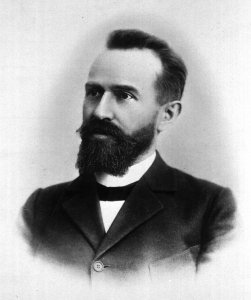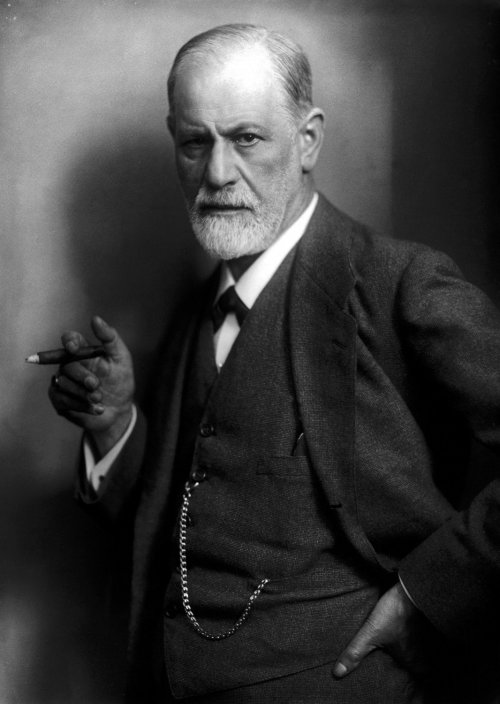Eugen Bleuler: A Pioneer on Schizophrenia

Eugen Bleuler was born in 1857 in Zurich. Throughout his professional career, he made countless contributions to psychology. This is why it’s important to learn about the life of this psychiatrist and some of his more renowned and accomplished works.
Before you start learning about Eugen Bleuler, it’s worth noting the influence Freud had on him. Freud’s work captivated Bleuler so much that it became the foundation of his work. Later on, you’ll understand the influence he had on Bleuler’s studies.
The early years
As mentioned in the article “Paul Eugen Bleuler and the origin of the term schizophrenia”, it was in Zurich where the psychiatrist began his studies on medicine. After working as a medical psychiatrist, Bleuler lived in Paris, London, and Munich to continue his research in psychology.
In Munich, he worked in a laboratory until 1885, the year he became a medical assistant in Burghölzli. A year later, with just 29 years old, he became the director of the Rheinau Psychiatric Hospital. After this excellent start of his professional career, and exactly 12 years later, he became a lecturer at the University of Zurich.

Freud’s studies on hysteria
Eugen Bleuler had an intense interest in Freud’s studies on hysteria. For reasons known to himself, Bleuler had an interest in hypnotism and introspection. This made him read everything Freud studied on the matter.
However, even though Bleuler seemed to be fixated on Freud’s studies, he was very careful about what he read. Eugen Bleuler felt uneasy about some of Freud’s concepts, such as libido.
“Here libido and ego-interest share the same fate and have once more become indistinguishable from each other. The familiar egoism of the sick person covers them both.”
-Sigmund Freud-
Therefore, even when he greatly admired Freud and used the concepts of psychoanalysis to discover great answers of his one, Bleuler disagreed on many of his concepts.
The term schizophrenia
According to the article “Paul Eugen Bleuler and the Birth of Schizophrenia (1908)“, Eugen first coined the term in April 1908. This was possible thanks to some concepts taken from Sigmund Freud and psychoanalysis.
Besides, he echoed the concept of dementia already coined by Kraepelin. However, Eugen Bleuler realized that this term referred to one of the symptoms of schizophrenia.
After investigating the subject thoroughly, he concluded that some people suffer from a split in their though process. Using the Greek language, he used the words skhízō (split) and phrḗn (mind) and created the term schizophrenia.

The subtypes of schizophrenia
Once he coined the term, Eugen Bleuler kept researching this disease and, leaning on the research Kraepelin did on dementia, he concluded that schizophrenia has different subtypes: paranoid, disorganized, and catatonic. All of these subtypes had already been established by Kraepelin, but Bleuler had some theories of his own. Kraepelin’s dementia wasn’t always part of progressive deterioration, it didn’t happen early on, and its subtypes weren’t exclusive.
Because of this, Bleuler did his research to coin a new concept that fitted more with what he had learned. Thus, nowadays, this term is clearer thanks to the work this psychiatrist did.
The eugenic sterilization
It’s worth noting the concept of eugenic sterilization. This was a process done to sterilize people with schizophrenia. It was done to avoid children from inheriting this disorder.
Nowadays, schizophrenia isn’t considered a hereditary disease. Just because someone in the family had it, doesn’t mean other members of the family will too. However, in Bleuler’s lifetime, there were few studies about schizophrenia and research was just starting.
Eugen Bleuler paved the way to investigating a disease that affects more than 21 million people today, according to the World Health Organization (WHO). He did an incredible job and, even though there are still many things to learn, he made valuable breakthroughs.
Eugen Bleuler was born in 1857 in Zurich. Throughout his professional career, he made countless contributions to psychology. This is why it’s important to learn about the life of this psychiatrist and some of his more renowned and accomplished works.
Before you start learning about Eugen Bleuler, it’s worth noting the influence Freud had on him. Freud’s work captivated Bleuler so much that it became the foundation of his work. Later on, you’ll understand the influence he had on Bleuler’s studies.
The early years
As mentioned in the article “Paul Eugen Bleuler and the origin of the term schizophrenia”, it was in Zurich where the psychiatrist began his studies on medicine. After working as a medical psychiatrist, Bleuler lived in Paris, London, and Munich to continue his research in psychology.
In Munich, he worked in a laboratory until 1885, the year he became a medical assistant in Burghölzli. A year later, with just 29 years old, he became the director of the Rheinau Psychiatric Hospital. After this excellent start of his professional career, and exactly 12 years later, he became a lecturer at the University of Zurich.

Freud’s studies on hysteria
Eugen Bleuler had an intense interest in Freud’s studies on hysteria. For reasons known to himself, Bleuler had an interest in hypnotism and introspection. This made him read everything Freud studied on the matter.
However, even though Bleuler seemed to be fixated on Freud’s studies, he was very careful about what he read. Eugen Bleuler felt uneasy about some of Freud’s concepts, such as libido.
“Here libido and ego-interest share the same fate and have once more become indistinguishable from each other. The familiar egoism of the sick person covers them both.”
-Sigmund Freud-
Therefore, even when he greatly admired Freud and used the concepts of psychoanalysis to discover great answers of his one, Bleuler disagreed on many of his concepts.
The term schizophrenia
According to the article “Paul Eugen Bleuler and the Birth of Schizophrenia (1908)“, Eugen first coined the term in April 1908. This was possible thanks to some concepts taken from Sigmund Freud and psychoanalysis.
Besides, he echoed the concept of dementia already coined by Kraepelin. However, Eugen Bleuler realized that this term referred to one of the symptoms of schizophrenia.
After investigating the subject thoroughly, he concluded that some people suffer from a split in their though process. Using the Greek language, he used the words skhízō (split) and phrḗn (mind) and created the term schizophrenia.

The subtypes of schizophrenia
Once he coined the term, Eugen Bleuler kept researching this disease and, leaning on the research Kraepelin did on dementia, he concluded that schizophrenia has different subtypes: paranoid, disorganized, and catatonic. All of these subtypes had already been established by Kraepelin, but Bleuler had some theories of his own. Kraepelin’s dementia wasn’t always part of progressive deterioration, it didn’t happen early on, and its subtypes weren’t exclusive.
Because of this, Bleuler did his research to coin a new concept that fitted more with what he had learned. Thus, nowadays, this term is clearer thanks to the work this psychiatrist did.
The eugenic sterilization
It’s worth noting the concept of eugenic sterilization. This was a process done to sterilize people with schizophrenia. It was done to avoid children from inheriting this disorder.
Nowadays, schizophrenia isn’t considered a hereditary disease. Just because someone in the family had it, doesn’t mean other members of the family will too. However, in Bleuler’s lifetime, there were few studies about schizophrenia and research was just starting.
Eugen Bleuler paved the way to investigating a disease that affects more than 21 million people today, according to the World Health Organization (WHO). He did an incredible job and, even though there are still many things to learn, he made valuable breakthroughs.
All cited sources were thoroughly reviewed by our team to ensure their quality, reliability, currency, and validity. The bibliography of this article was considered reliable and of academic or scientific accuracy.
- del Río Diéguez, M. (2006). Creación artística y enfermedad mental. Universidad Complutense de Madrid, Facultad de Bellas Artes.
- Garrabé, Jean. (2009). La psiquiatría de la persona. Salud mental, 32(5), 359-363. Recuperado en 21 de octubre de 2019, de http://www.scielo.org.mx/scielo.php?script=sci_arttext&pid=S0185-33252009000500001&lng=es&tlng=es.
This text is provided for informational purposes only and does not replace consultation with a professional. If in doubt, consult your specialist.







